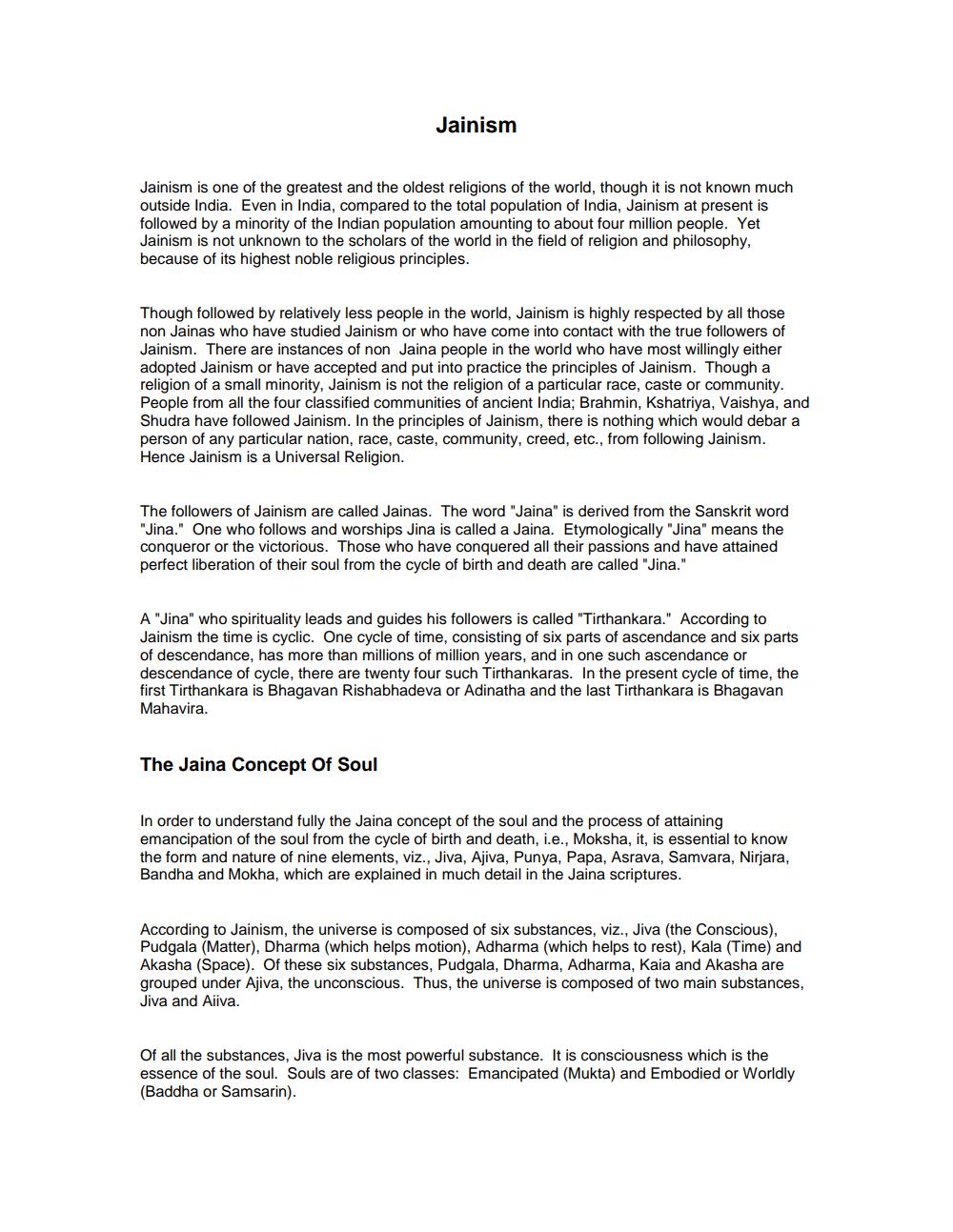Book Title: Shraman Bhagwan Mahavir And Jainism Author(s): Ramanlal C Shah Publisher: Jain Society of Metro Washington View full book textPage 3
________________ Jainism Jainism is one of the greatest and the oldest religions of the world, though it is not known much outside India. Even in India, compared to the total population of India, Jainism at present is followed by a minority of the Indian population amounting to about four million people. Yet Jainism is not unknown to the scholars of the world in the field of religion and philosophy, because of its highest noble religious principles. Though followed by relatively less people in the world, Jainism is highly respected by all those non Jainas who have studied Jainism or who have come into contact with the true followers of Jainism. There are instances of non Jaina people in the world who have most willingly either adopted Jainism or have accepted and put into practice the principles of Jainism. Though a religion of a small minority, Jainism is not the religion of a particular race, caste or community. People from all the four classified communities of ancient India; Brahmin, Kshatriya, Vaishya, and Shudra have followed Jainism. In the principles of Jainism, there is nothing which would debar a person of any particular nation, race, caste, community, creed, etc., from following Jainism. Hence Jainism is a Universal Religion. The followers of Jainism are called Jainas. The word "Jaina" is derived from the Sanskrit word "Jina." One who follows and worships Jina is called a Jaina. Etymologically "Jina" means the conqueror or the victorious. Those who have conquered all their passions and have attained perfect liberation of their soul from the cycle of birth and death are called "Jina." A "Jina" who spirituality leads and guides his followers is called "Tirthankara." According to Jainism the time is cyclic. One cycle of time, consisting of six parts of ascendance and six parts of descendance, has more than millions of million years, and in one such ascendance or descendance of cycle, there are twenty four such Tirthankaras. In the present cycle of time, the first Tirthankara is Bhagavan Rishabhadeva or Adinatha and the last Tirthankara is Bhagavan Mahavira. The Jaina Concept Of Soul In order to understand fully the Jaina concept of the soul and the process of attaining emancipation of the soul from the cycle of birth and death, i.e., Moksha, it, is essential to know the form and nature of nine elements, viz., Jiva, Ajiva, Punya, Papa, Asrava, Samvara, Nirjara, Bandha and Mokha, which are explained in much detail in the Jaina scriptures. According to Jainism, the universe is composed of six substances, viz., Jiva (the Conscious), Pudgala (Matter), Dharma (which helps motion), Adharma (which helps to rest), Kala (Time) and Akasha (Space). Of these six substances, Pudgala, Dharma, Adharma, Kaia and Akasha are grouped under Ajiva, the unconscious. Thus, the universe is composed of two main substances, Jiva and Aiiva. Of all the substances, Jiva is the most powerful substance. It is consciousness which is the essence of the soul. Souls are of two classes: Emancipated (Mukta) and Embodied or Worldly (Baddha or Samsarin).Page Navigation
1 2 3 4 5 6 7 8 9
